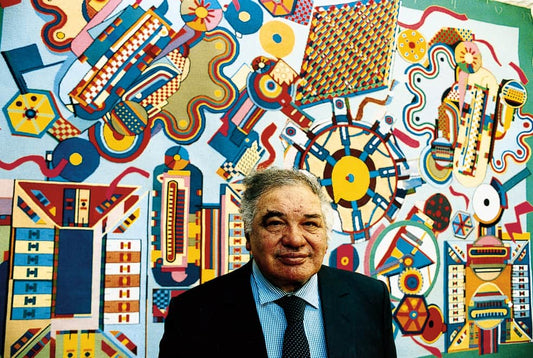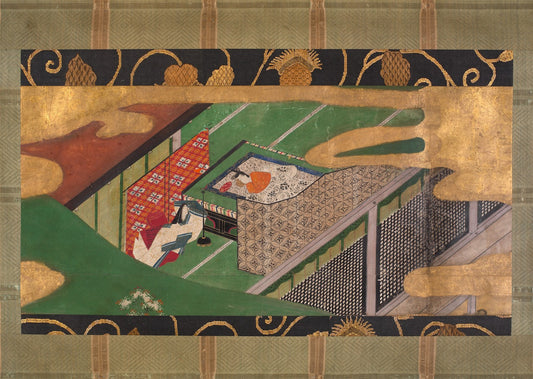Feature image: Lucas Cranach (German, 1515–86). Christ Blessing the Children, ca. 1537–53. Courtesy SMK National Gallery of Denmark via The Met
Motherhood in Art History
Mothers and motherhood are celebrated every year on Mother’s Day, but we rarely associate motherhood with art. In early art history, motherhood began with Mary and baby Jesus from the classical biblical story. Mary and Jesus were best known as Madonna and Child in many paintings, and they served as a major motif in the earliest depictions of motherhood. Various artists, such as Michelangelo, Lord Fredric Leighton, Dorothea Lange, and Louise Bourgeois, depict motherhood within their artwork. The artists focused on the different roles and challenges women face as mothers, such as teaching a child, coping with the death of a child, providing for a child, and protecting a child. This article will focus on their representations. Motherhood itself should be celebrated, but more importantly, a deeper look needs to be considered into what makes a mother a mother.

Michelangelo’s Pieta
During the Renaissance era, Michelangelo gave Mary and Jesus an alternative perspective of motherhood. For his sculpture Pieta, which sits in the Vatican today, Michelangelo directed his attention toward Jesus as an adult and focused on Mary as a grieving mother. The marble sculpture concentrates on Jesus’s adult lifeless body being held by Mary. At the time of its release, the sculpture was popular because of its 3-D dimensions, such as the detail in Mary’s face and the cloak she wore.

Interestingly, she is larger than Jesus, indicating the weight she carries regarding the death of her son. To be more specific, the Italian Renaissance wrote, “The reason Michelangelo did this was probably because it was necessary so that the Virgin could support her son on her lap; had her body been smaller, it might have been very difficult or awkward for her to have held an adult male as gracefully as she does.” From newborn to adult, Jesus is still Mary’s son, and she has lost him. Mary, like other mothers who’ve lost a child, grieves the death of her son. Michelangelo’s sculpture exfoliates the horror and challenges of losing a child.
Music Lesson
Mothers, in their nurturing roles, are teachers for their children. Lord Fredric Leighton painted this concept in his 1877 oil on canvas called Music Lesson. His painting portrays an unnamed mother sitting down with her daughter and teaching her how to play the guitar. In other words, she's giving her daughter a music lesson, hence the title of the painting. Leighton's painting "is an example of Academic Art." It's considered academic because Leighton's painting combines different styles and techniques, such as romanticism and neoclassicism. According to Artwork Only, "This painting is a portrait featuring a woman teaching a young girl to play a stringed instrument. The folds and waves of the women's and girl's dress and the gracefulness of their poses perfectly contrast with the sturdy, sculptural background." The painting is subtle yet beautiful because it shares a sweet moment between a mother and daughter. Mothers are the first mentors and teachers children receive in their lives. Leighton's work is a reminder that mothers are mentors and give their children their first life lessons.

Migrant Mother
Besides grieving and teaching, mothers faced providing for their children during times of uncertainty. In March 1936, during the Great Depression in Nipomo, California, photographer Dorothea Lange took a picture of a woman with her children. The woman is Florence Owens Thompson, a 32-year-old farm worker. The photograph became known as Migrant Mother. It depicts Owens sitting with her three children “huddled together in a tent at a pea-pickers’ camp in Nipomo, California.” Regarding Thompson’s children, “In lieu of the girls’ faces, we see their tousled heads nestling against their mother’s shoulders; their anonymity serves to lend these familial bonds a sense of universality.” The image of Thompson placing her head on her hand is her contemplating how she’s going to provide for her children given the circumstances. In fact, Lange recalls asking Thompson what they survived on, and Lange mentioned, “She said that they had been living on frozen vegetables from the surrounding fields and birds that the children killed.” Thompson hoped that Lange taking her picture of her and her children would help spread the word that they needed help.

Maman (Ana)
Mothers are constantly on the lookout for their children, protecting them from any harm. In 1999, artist Louise Bourgeois took the idea of protection to a whole new level. She sculpted a giant spider-looking sculpture that “casts a powerful physical and psychological shadow.” Her sculpture, known as Maman (Ana), is over 30 feet tall and made of bronze and marble. Meghan Dailey wrote, “Maman, in fact, is associated with the artist’s own mother. The spider, who protects her precious eggs in a steel cage-like body, provokes awe and fear, but her massive height, improbably balanced on slender legs, conveys an almost poignant vulnerability.” Unlike the other artists mentioned, this sculpture is unique because it does not focus on a human mother. The only human feature the sculpture represents is paying tribute to Bourgeois's mother, who was a weaver, and spiders, in general, are a motif within Bourgeois' early work. Maman isn’t the first artwork by her that focuses on spiders. Through the imagery of a spider, Bourgeois portrays a mythological creature. Thus, the theme of motherhood carries on within other genres. Motherhood is protecting their children at all costs, even when they feel vulnerable.

Motherhood began with Madonna and Child but has since appeared in many different forms of art. Michelangelo, Leighton, Lange, and Bourgeois portray mothers' themes and challenges in motherhood. Their work celebrates motherhood through the acts of grieving, teaching, providing, and protecting. In addition, over the years, artists have provided different forms of art: paintings, photographs, and sculptures. The idea is that motherhood is celebrated in many forms throughout art history. Therefore, being a mother comes with a variety of tasks, which our society should honor on a regular basis. Nevertheless, mothers are nurturers who do these tasks out of love for their children.
©ArtRKL™️ LLC 2021-2024. All rights reserved. This material may not be published, broadcast, rewritten or redistributed. ArtRKL™️ and its underscore design indicate trademarks of ArtRKL™️ LLC and its subsidiaries.





